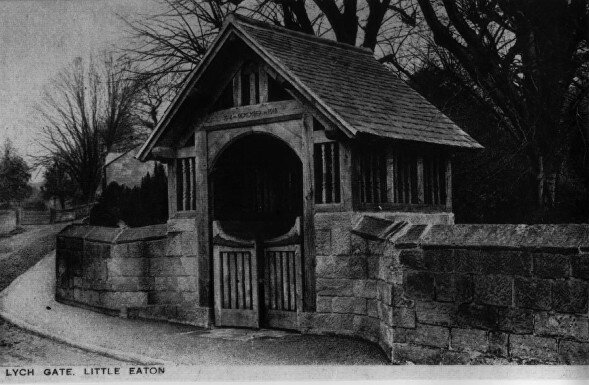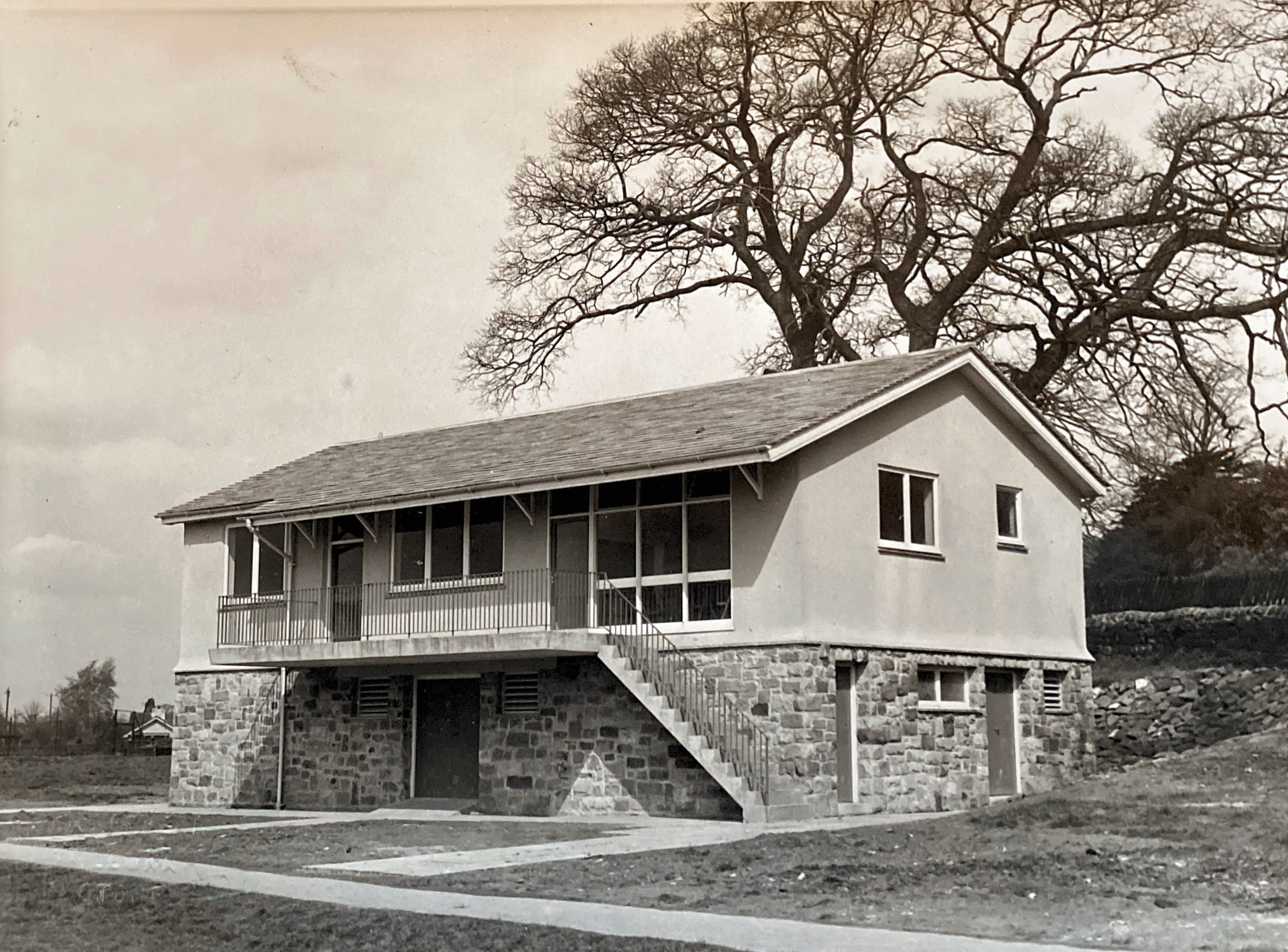
Who Ruled Little Eaton?
Who ruled? (2)
Little Eaton Parish Council
The Parish Council was set up in 1894, under the chairmanship of Benjamin Scott Currey, solicitor and Clerk to the Little Chester Manor Court. The Council membership comprised the great and good of that time: Henry Currey, Benjamin’s son, John Tempest-Harvey of Peckwash Mill, Joseph Cudlip of the Brook Mill, farmer and butcher George Thums. Richard Poole the blacksmith, Samuel Tomlinson the shoemaker, Henry Jackson of the Poplars, and two Birkinshaw brothers. Mr Grocock, the school headteacher, was the Clerk.
The Parish Council Minute Book from 1894 to 1906
From the start, several themes emerged which formed the agenda for meetings for the next 120 years. These included:
Water supply and sanitation
At the turn of the century, the council began campaigning about the water supply to the village. There were nearly 100 wells in the village serving farms, pubs or individual houses. The only general supply was to two troughs and pumps on the Duffield Road and Jack O’Darley bridge which Derby corporation were charged with maintaining. All ratepayers were liable to pay for this, whether or not they used it. Frequent meetings of the Council referred to the maintenance of these wells and the unfairness of the rate demands. In 1906 a water main was installed along the Duffield Road and over the bridge to the north of the village and in the 1930s more pumps were installed. By the 1920s, many houses were connected to the mains – including the new Council houses on Barley Close.
In the early days, the focus was on the maintenance and emptying of middens and ashpits. There was no council provision for this. In 1922, strong exception was taken to the exorbitant charge (£45.19.3) Mr Walters made for cleaning the sewer on The Town. As late as 1948, there was a debate about how to replace earth closets with water closets in some houses.
The Park and Recreation
Little Eaton Park before the Pavilion was built
In 1903, Thomas Bates died leaving a legacy which included the provision of a park for the village and several other facilities. Many meetings were taken up on the purchase of the Long Roods field, the provision of a cricket pitch, and the planting of trees. In the early years, the field was let for grazing – for example in 1913, George Thums of Church farm was charged £3 a year for grazing and mowing for hay. In 1922, a tennis court was provided and in 1923 a bowls club started.
By 1925, swings for the children had appeared – together with a debate on whether to remove them because of the noise. In 1904, the Council “took down a hovel” on the park and installed a urinal. Arrangements were made to clean this once a year (cost 5/-) – increased in 1916 to once a month at the cost of 10/- a year. Discussions about toilets in the park continued for the next hundred years.
In the 1920s a wooden pavilion was built for sports events on the park and in 1966 this was replaced by a stone and brick structure which could accommodate indoor meetings and performances. This was extended in 2010, with the help of a lottery grant, to form the existing building.
New pavilion 1966
Pavilion opening May 1966 with Ted Preedy, Chair of Parish Council and other councillors
A swimming pool for Little Eaton?
By 1931, a debate had begun about the provision of a swimming pool for the village. There was provision in the Bates’ Trust for a pool but the Council was unable to identify a suitable and affordable site for it.
A study was commissioned about the possibility of building a pool on the now derelict Bleach Mill site (including the possibility of developing the mill pond as an outdoor pool), but the cost was found to be unaffordable.
Footpaths and roads
Throughout the work of the Council there has been a continual theme of complaints made about the state of footpaths around the village and letters written by the Council to landowners asking them to unblock them.
One of these spats made The Daily Mirror in “The Battle of the Footpaths” in 1947. Apparently Garford Lilley, owner of the Outwoods, had blocked some stiles on the grounds that that public access endangered his herd of pedigree cattle. Mr Lilley had put up barbed wire and other barriers across the public footpath between Little Eaton and Blue Mountains, a traditional right of way. The Parish Council politely asked him to remove it. When he did not, Parish Council members and 21 villagers went by night with wire cutters and removed the obstruction.
During the 1930s and 1940s, there was also a dispute about a footpath on land owned by Mr Barton, founder of Barton Buses. He had moved from Little Eaton but retained houses, a shop and some land. The Council did not seem to resolve the question of who was responsible for maintaining the footpath.
There was a stream of letters written to the County or District Councils about the condition of roads. There were debates in the 1930s,1940s and 1950s about traffic leading to the construction of a dual carriageway from the A38 into the centre of the village – and, shortly afterwards, the realisation that this was a very bad idea. Eventually, the A38 bypass was built and welcomed by Mr Preedy, the Chair of the Council
World wars
The attitudes and actions of the Council to the two world wars were different. At the beginning of the first world war the Council were determined to see that as many young men as possible enlisted in the army. Council members all enthusiastically debated what they could do to increase recruitment. This was followed by a realisation of the consequences. Letters of condolence were written by the Council to every bereaved family.
Recurring discussions were held on appropriate ways of remembering the fallen. First there was the question of a memorial stone, eventually erected in the Park.
By the second world war there was conscription so there was no need for the fervour for recruitment. Debates turned to the erection of air raid shelters (not granted). Various war Committees were set up, for example a Relief Committee, a Rifle Club and a Committee for War Funds. There was a resolution to take “the maximum number” of evacuees from London and residents were canvassed to find who was prepared to take them. A “Dig for Victory “ campaign was launched, recruiting villagers to plant vegetables. Fire watchers were recruited and sandbags purchased. The death of Eric Johnson while on Home Guard duty was recorded in 1941. In 1945 there were debates about suitable memorials for the fallen.
Royal Events
The Coronations of George V, Edward VII, George VI, Elizabeth II and Charles III were all celebrated by the Parish Council by laying on picnics, bands and flags. A special committee was set up to celebrate the coronation of Edward VIII in 1937. Nothing similar seems to have happened for George VI in the following year. But a major event was laid on in 1952 for Queen Elizabeth – including the purchase of a new flag for the Council.
Anti- Social behaviour
Anti- social behaviour among the youths of the village is not a recent phenomenon.
In 1920, a stern letter was written to the secretary of Little Eaton Football Club protesting about the bad language at matches. In 1927 there was a special meeting of the Council to discuss damage to the pavilion. Some boys from well- known Little Eaton families were involved – Gerald and Gilbert Easter, Otto Birkinshaw, R Lamb, William Piggs, John Hill, William Spencer, Jack Fletcher and Jim Saunders. They threatened to close the park until an anonymous benefactor offered to pay for the repairs. The Council agreed to let the boys off if they were given a severe caution.
There were frequent discussions about behaviour at Tittlecock Fair. As early as 1904, serious damage was reported and extra police cover was sought. In the late 1930s and 1940s there were other instances of vandalism, supposedly from people from outside the village. In the 1950s, the litter from the Fair was creating problems.
Later, in the 1990s, neighbourhood watch and speed watch groups were established.
Flooding
Problems with flooding were discussed from the start. There were letters written to the District Council in 1927. There were further floods in 1948 affecting many houses, The Town, the bridges and the park. After the disastrous floods of 1957, with a number of houses, the shops and the school flooded. The Council agreed to supply soap and disinfectant to all houses affected. Eventually a major engineering scheme to contain the brook was agreed. However, floods remained an ever- present threat to the village.
Flooding on The Town, 1957
Caravans
Discussions were held as early as 1934 about caravans on the site of the Bleach Mill – then a scrap yard. These belonged to the Ball family, travellers associated with fairs such as the Tittlecock Fair. It was decided that nothing should be done. Later, up to 14 caravans appeared in a field next to the New Inn. By that time the second world war was on and no action was taken.
Housing
In 1917, the District Council started a scheme of building houses owned by them and rented to villagers – Council houses. The Parish Council were not directly involved but had plenty to say.
Mr Currey proposed 20 houses – later reduced to 15. They were being built by 1921, first at The Leys and then in Barley Close (then called Chapel Lane). There were frequent protests about the allocation of these. In 1931, a request was made (and rejected) for the Parish Council to be responsible for allocation, rather than the District Council.
In 1934, the Council discussed the purchase of a site for the erection of Alms Houses under the Bates legacy. A site was bought for £150.0.6 and eventually the houses were built.
After the war there were continuous discussions about sites for more houses. Over the 1950s, 1960s more Council houses were sought. In the mid -1950s.
2 pairs of bungalows for old people and 3 pairs of semis were agreed on Station Road – with the demolition of “Vickars Row” of cottages. Most of the decisions on these sites lay in the hands of Shardlow Rural district Council, but the Parish Council had its say.
Over the 1950s, 1960s, 1970s and 1980s several more sites were suggested along Barley Close, The Leys, Bermuda Avenue, and Holm Avenue. After the closure of the Brook Mill, housing on Camp Wood Close was agreed. In 2018, a group to prepare a Neighbourhood Plan was established and the Plan was endorsed by the Parish Council, District Council (by then Erewash) and County Councils.
Education and Libraries.
The first Clerk of the Council was Mr Grocock, the school head teacher and meetings were held in the school. There was a separate school governing body so discussions centred on extras such as the provision of a wireless set for the school (in 1945).
Debates about nursery education were a feature of several meetings. It was suggested in 1937 and rejected on the grounds that children should be in the care of their mothers until school age. But then, in 1942, a nursery school was agreed “to further the war effort”.
Originally there was a cupboard in the school which acted as a library. This was dispersed in 1913. Then, in 1952, a library was established in the Methodist Chapel. It was closed in 1953 in favour of a mobile service.
Philip and Ruth Hunter






